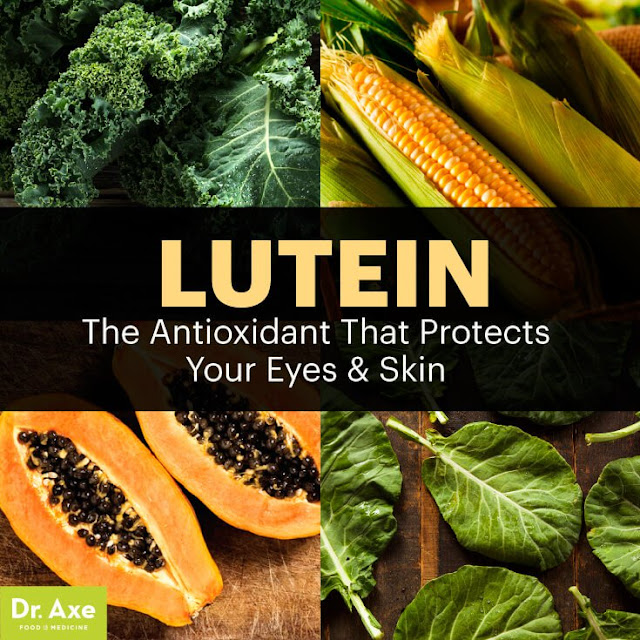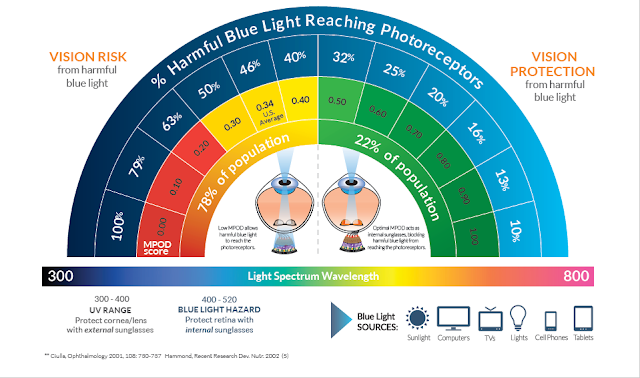Lutein and Zeaxanthin Eye Vitamins
Lutein (LOO-high schooler) is one of more than 600 known normally happening carotenoids. Found in green verdant vegetables, for example, spinach and kale, lutein is utilized by life forms as a cancer prevention agent and for blue light retention. Lutein is covalently bound to at least one unsaturated fats present in a few products of the soil, quite marigolds (Tagetes). Saponification of lutein esters yields lutein in around a 2:1 weight-to-weight change.
Lutein is a lipophilic atom and is by and large insoluble in water. The nearness of the long chromophore of conjugated twofold bonds (polyene chain) gives the unmistakable light-retaining properties. The polyene fasten is vulnerable to oxidative corruption by light or warm and is synthetically shaky in acids.
The important characteristic stereoisomer of lutein is (3R,3'R,6'R)- beta, epsilon-Carotene-3,3'- diol. Substance
This xanthophyll, similar to its sister compound zeaxanthin, has essentially been utilized as a characteristic colorant because of its orange-red shading. Lutein ingests blue light and in this way seems yellow at low fixations and orange-red at high focuses.
Lutein was generally utilized in chicken feed to give the yellow shade of grill chicken skin. Surveyed shoppers seen yellow chicken skin more positively than white chicken skin. Such lutein fortress likewise results in a darker yellow egg yolk. Today the shading of the egg yolk has turned into the essential purpose behind feed fortress. Lutein isn't utilized as a colorant in different sustenances because of its constrained steadiness, particularly within the sight of different colors.
Lutein was observed to be available in a concentrated zone of the macula, a little region of the retina in charge of focal vision. The speculation for the regular focus is that lutein shields from oxidative pressure and high-vitality light. Different research thinks about have demonstrated that an immediate relationship exists between lutein admission and pigmentation in the eye. A few investigations additionally demonstrate that an expansion in macula pigmentation diminishes the hazard for eye ailments, for example, Age-related Macular Degeneration (AMD).

Lutein is a characteristic piece of human eating regimen when foods grown from the ground are devoured. For people lacking adequate lutein consumption, lutein-sustained nourishments are accessible, or on account of elderly individuals with an inadequately engrossing stomach related framework, stronghold through a sublingual splash guarantees most extreme advantage to the eyes.
As ahead of schedule as 1996, lutein has been fused into dietary enhancements. While no suggested day by day stipend presently exists for lutein with respect to different supplements, beneficial outcomes have been seen at levels of 6 mg/day . The main authoritative reaction of overabundance lutein utilization is the equivalent watched for β-carotene overdose, in particular bronzing of the skin (carotenodermia). The typical levels of Lutein found in a day by day nutrient tablet can be as low as 0.25mg.
The practical distinction between the advantages of lutein (free shape) and lutein esters isn't totally known. It is proposed that the bioavailability is bring down for lutein esters, however much discussion proceeds.
As a sustenance added substance, lutein has the E number E161b.
Lutein is a lipophilic atom and is by and large insoluble in water. The nearness of the long chromophore of conjugated twofold bonds (polyene chain) gives the unmistakable light-retaining properties. The polyene fasten is vulnerable to oxidative corruption by light or warm and is synthetically shaky in acids.
The important characteristic stereoisomer of lutein is (3R,3'R,6'R)- beta, epsilon-Carotene-3,3'- diol. Substance
 |
| Eye Vitamin |
Lutein and Zeaxanthin Pills
This xanthophyll, similar to its sister compound zeaxanthin, has essentially been utilized as a characteristic colorant because of its orange-red shading. Lutein ingests blue light and in this way seems yellow at low fixations and orange-red at high focuses.
Lutein was generally utilized in chicken feed to give the yellow shade of grill chicken skin. Surveyed shoppers seen yellow chicken skin more positively than white chicken skin. Such lutein fortress likewise results in a darker yellow egg yolk. Today the shading of the egg yolk has turned into the essential purpose behind feed fortress. Lutein isn't utilized as a colorant in different sustenances because of its constrained steadiness, particularly within the sight of different colors.
Advantages of Lutein and Zeaxanthin
Lutein was observed to be available in a concentrated zone of the macula, a little region of the retina in charge of focal vision. The speculation for the regular focus is that lutein shields from oxidative pressure and high-vitality light. Different research thinks about have demonstrated that an immediate relationship exists between lutein admission and pigmentation in the eye. A few investigations additionally demonstrate that an expansion in macula pigmentation diminishes the hazard for eye ailments, for example, Age-related Macular Degeneration (AMD).

Lutein is a characteristic piece of human eating regimen when foods grown from the ground are devoured. For people lacking adequate lutein consumption, lutein-sustained nourishments are accessible, or on account of elderly individuals with an inadequately engrossing stomach related framework, stronghold through a sublingual splash guarantees most extreme advantage to the eyes.
As ahead of schedule as 1996, lutein has been fused into dietary enhancements. While no suggested day by day stipend presently exists for lutein with respect to different supplements, beneficial outcomes have been seen at levels of 6 mg/day . The main authoritative reaction of overabundance lutein utilization is the equivalent watched for β-carotene overdose, in particular bronzing of the skin (carotenodermia). The typical levels of Lutein found in a day by day nutrient tablet can be as low as 0.25mg.
The practical distinction between the advantages of lutein (free shape) and lutein esters isn't totally known. It is proposed that the bioavailability is bring down for lutein esters, however much discussion proceeds.
As a sustenance added substance, lutein has the E number E161b.











